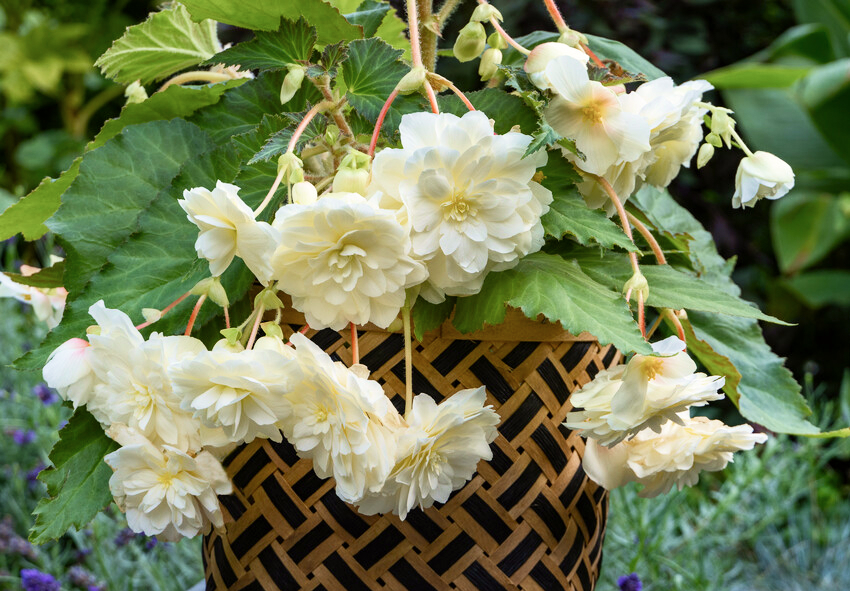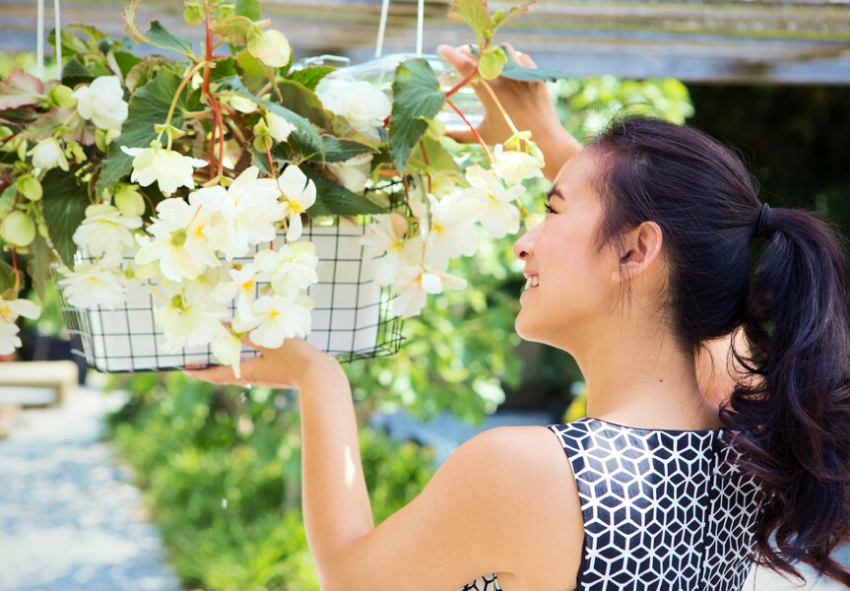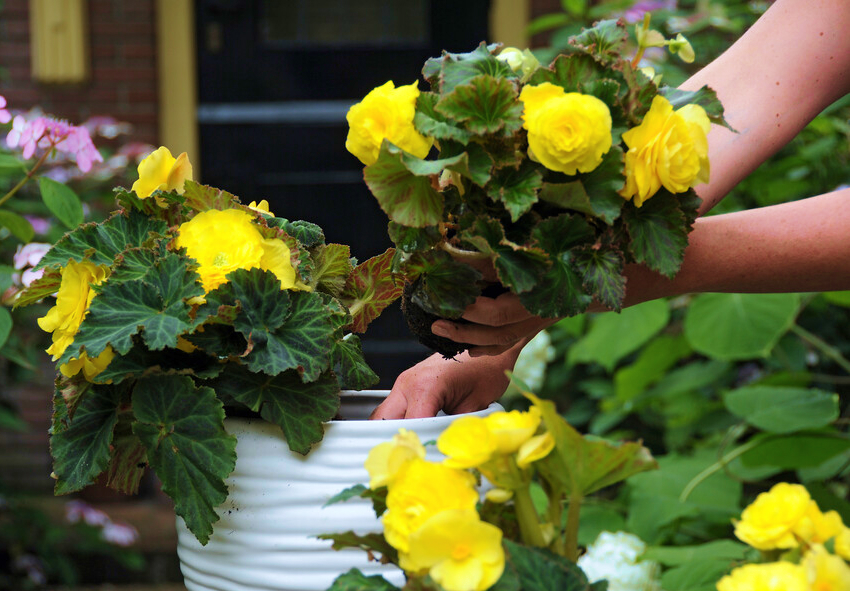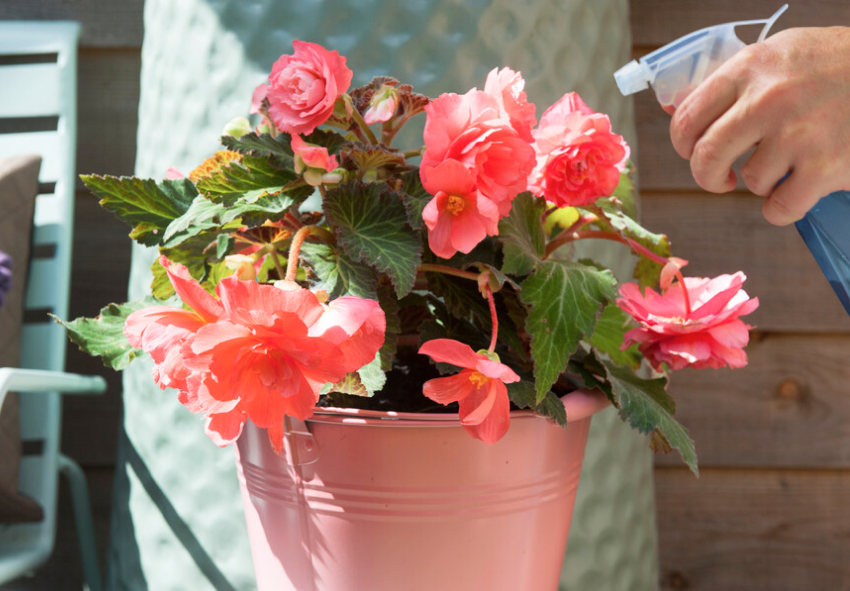Begonias are among the most popular and versatile flowering plants, celebrated for their vivid colors, unique foliage, and ability to thrive both indoors and out. With over a thousand species and countless hybrids, begonias offer something for every gardener. This full guide covers everything from choosing the right variety to planting, caring, and troubleshooting common begonia issues. Our gardening blog is a perfect place to find all the information you need!
Understanding Begonias

Before diving into begonia care, it’s important to understand the different types and what makes them unique. From their wide variety of colors to diverse leaf shapes and growth habits, begonias offer endless options for gardeners. Knowing their classifications will help you choose the right variety for your space and growing conditions.
Common Begonia Varieties
Begonias are classified into several groups, with the most common being:
- Begonia semperflorens (Wax Begonia): Compact and easy to grow, wax begonias feature glossy leaves and blooms in red, pink, or white. Perfect for garden borders and containers.
- Begonia rex (Rex Begonia): Known for its stunning foliage, Rex Begonia offers colorful, patterned leaves in shades of silver, purple, and green. Ideal as a houseplant.
- Begonia tuberhybrida (Tuberous Begonia): These produce large, vibrant flowers and thrive in shaded outdoor spaces. They grow from tubers and are popular in hanging baskets and pots.
- Begonia maculata (Polka Dot Begonia): Famous for its angel-wing leaves dotted with silver spots, this variety is prized for its decorative look and pink or white blossoms.
- Begonia boliviensis: A trailing type with bright orange or red tubular flowers, great for hanging baskets. It’s known for its vigorous growth and long blooming season.
- Begonia cucullata: This hardy, self-seeding variety produces simple flowers and heart-shaped leaves. It’s often used in mass plantings and thrives with minimal care.
Choosing the Right Begonia for Your Space
Selecting the ideal begonia depends on where you plan to grow it. Tuberous and fibrous begonias work well outdoors during the growing season, especially in shady garden beds or pots. Rex and rhizomatous begonias thrive indoors in containers where humidity and light can be more easily controlled.
How to Grow Begonias
Whether indoors or outdoors, growing begonias successfully depends on providing the right environment. Light, soil, water, and temperature all play key roles in healthy plant development. This section outlines the essential care elements needed to keep your begonias thriving throughout the year.
Soil and Potting Mix
Begonias prefer light, well-draining soil rich in organic matter. A mix of peat moss, perlite, and compost works well for most varieties. Proper drainage is essential to prevent root rot, especially when grown in pots.
Watering and Humidity Needs

Water begonias when the top inch of soil feels dry, but avoid letting them sit in soggy soil. These plants also benefit from higher humidity, especially indoors—try placing a humidity tray or using a humidifier to keep levels consistent.
Light and Temperature Requirements
Most begonias enjoy bright, indirect sunlight. Direct sun can scorch their leaves, especially for indoor types like rex begonias. Ideal temperatures range between 60–75°F (15–24°C), and they should be protected from frost and extreme heat.
Planting Begonias Outdoors
Begonias can add vibrant color and lush texture to garden beds, borders, and outdoor containers. However, timing and preparation are crucial for success. Learn when and how to plant begonias outside so they establish quickly and deliver long-lasting blooms.
Best Time to Plant Begonias
Early Spring (Indoors for Tuberous Begonias)
- Start tuberous begonias indoors 8–10 weeks before the last frost to give them a head start.
- Place them in trays or pots with light soil and provide warmth and indirect light.
After Last Frost (Outdoors for All Types)
- Wait until all danger of frost has passed before planting begonias outside.
- Soil temperature should be consistently above 15°C (60°F) for optimal growth.
Late Spring to Early Summer (Cooler Regions)
- In cooler climates, planting in late spring ensures begonias won’t be shocked by low temperatures.
- Choose a location with morning sun and afternoon shade.
Anytime Indoors (With Proper Conditions)
- Indoor begonias can be planted year-round if they receive adequate warmth and filtered light.
- Use containers with drainage and avoid overwatering.
Autumn for Overwintering or Propagation
- Late fall is a good time to plant begonia cuttings or prep tubers for storage.
- This helps maintain the plant’s cycle and prepare for spring growth.
Garden Bed Preparation and Spacing
Prepare your garden bed with rich, loose soil and mix in organic compost for nutrients. Space begonias 8–12 inches apart, depending on the variety, to ensure proper air circulation and reduce the risk of disease.
Growing Begonias Indoors

Indoor begonias bring beauty and color to any room with minimal upkeep. They’re perfect for homes, apartments, and office spaces where lighting and humidity can be controlled. Discover how to grow begonias indoors by creating the ideal growing environment and displaying them for maximum decorative impact.
How to Care for Begonias Indoors
Knowing how to grow begonias indoors starts with proper placement. Choose a bright room with filtered light and keep the plant away from cold drafts. Water consistently, maintain humidity, and repot when the plant outgrows its container.
Display Ideas for Indoor Begonias
Begonias make excellent indoor decor due to their bold leaves and flowers. Use decorative ceramic pots or hanging baskets to showcase them in living rooms, kitchens, or offices. Grouping different types can create an eye-catching, low-maintenance plant display.
Seasonal Care for Begonias
Begonias have different care needs depending on the time of year. From feeding and pruning in the summer to overwintering strategies for tuberous types, seasonal maintenance ensures ongoing health and performance. Follow these seasonal care tips to keep your begonias in top condition year-round:
Spring Care
- Begin watering regularly as new growth appears.
- Repot if needed and start fertilizing with a balanced liquid fertilizer.
- Gradually acclimate indoor begonias to outdoor conditions if moving them outside.
Summer Care
- Keep begonias in partial shade to avoid leaf scorch.
- Water consistently, especially during hot spells, ensuring good drainage.
- Deadhead faded blooms to encourage continuous flowering.
Autumn Care
- Reduce watering as temperatures drop.
- For tuberous varieties, stop watering once foliage yellows and dig up tubers for storage.
- Bring indoor varieties back inside before the first frost.
Winter Care
- Store dormant tubers in a cool, dry place until spring.
- Keep indoor begonias in bright, indirect light and reduce watering.
- Avoid fertilizing during dormancy to prevent weak growth.
Common Problems and Solutions

Even hardy begonias can occasionally face issues like pests, diseases, or poor blooming. Recognizing early signs of stress and taking swift action can prevent bigger problems down the line. This section will help you troubleshoot and correct common begonia problems with practical, proven solutions.
Pests and Diseases in Begonias
Pest and disease control for begonias is an important part of their growing process. Common begonia pests include mealybugs, aphids, and whiteflies. Fungal diseases like powdery mildew and root rot can also be issues, especially in high humidity or poorly drained soil. Treat pests with insecticidal soap and avoid overhead watering to prevent disease.
Troubleshooting Leaf Drop and Poor Blooming
If your begonia drops leaves or fails to bloom, it may be getting too little light or experiencing temperature stress. Overwatering or underwatering can also cause problems. Adjust care conditions and trim back leggy growth to encourage new blooms.
Propagating Begonias
Want more begonias without buying new plants? Propagation is an easy and rewarding way to expand your collection. From simple stem cuttings to dividing tubers and rhizomes, this section will guide you through beginner-friendly methods to grow new plants from your existing ones.
Leaf and Stem Cutting Techniques
Many begonias can be propagated from leaf or stem cuttings. Cut a healthy stem with a few leaves and root it in water or moist soil. Leaf cuttings from rex begonias can also grow into new plants when placed flat on soil and kept moist.
Dividing Tuberous or Rhizomatous Types
Tuberous and rhizomatous begonias can be divided when repotting. Carefully separate the root structures, ensuring each section has a healthy shoot or bud, then plant each in fresh soil. This helps rejuvenate older plants and expand your collection.
Conclusion
Begonias are stunning, easy-to-care-for plants that thrive with a bit of attention and the right conditions. Whether you’re planting begonias outdoors or learning how to grow begonias indoors, this guide provides all the essential steps for success. Explore our online store for high-quality begonia bulbs and gardening tools to start or expand your begonia collection.
Frequently Asked Questions (FAQs) about Begonias
1. When is the best time to plant begonias?
The best time to plant begonias outdoors is after the last frost, typically in late spring. Tuberous begonias can be started indoors 8–10 weeks earlier to give them a head start. Ensure the soil is warm and nighttime temperatures stay above 10°C (50°F).
2. Can begonias grow indoors year-round?
Yes, many types of begonias—especially rex and cane begonias—can thrive indoors year-round with the right care. They need bright, indirect light, consistent moisture without overwatering, and good air circulation to prevent mildew and pests.
3. How often should I water my begonias?
Begonias prefer evenly moist soil but dislike sitting in water. Water when the top inch of soil feels dry. During hot weather or active growth, they may need more frequent watering. Always ensure proper drainage to avoid root rot.
4. Can I order begonia corms or tubers from your online store?
Yes, you can order Begonia tubers from our online store Dutch-bulbs.com. We typically offer a variety of Begonia tubers for purchase during the fall. Ordering in the fall allows you to receive your tubers in time for spring planting, ensuring they have the best chance of thriving in your garden.
5. Do begonias need to be fertilized?
Yes, begonias benefit from regular feeding. Use a balanced, water-soluble fertilizer every 2–4 weeks during the growing season (spring through early autumn). Avoid over-fertilizing, as it can cause leggy growth or reduce flowering.
Published: 16.05.2025
